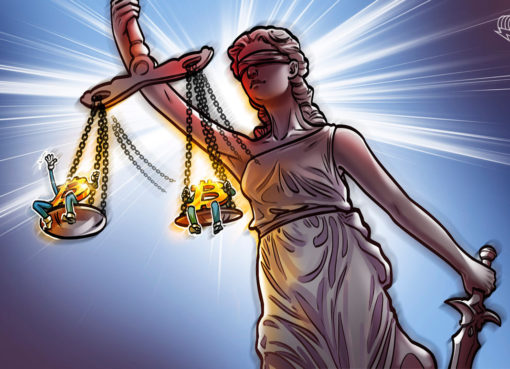While some champion CBDCs as a financial revolution, many view them as a threat to privacy and freedom. Crypto.news spoke with experts to shed light on this complex debate.
Digital currencies backed by central banks, or CBDCs, could completely change how we use money. They could make payments quicker, less costly, and more effective both within countries and across borders. By cutting down on the expenses tied to making, sharing, and protecting physical cash, CBDCs could help economies work better and greatly improve how banking systems operate.
However, many experts believe that the advantages of such a system are eclipsed by potential misuse and societal consequences.
Are the benefits worth it?
Neel Kashkari, the president of the Federal Reserve Bank of Minneapolis, questioned the need for CBDCs, failing to identify the unique problem this innovation claims to solve.
“I keep asking anybody to explain to me what problem [a CBDC] is solving. I can send anybody in this room $5 using Venmo right now. So what is it that CBDC can do that Venmo can’t do?” he said at the Minnesota Transportation Conference and Expo in May 2023.
Financial inclusion is often cited as a major benefit of CBDCs. However, Nicholas Anthony, Policy Analyst at the Cato Institute’s Center for Monetary and Financial Alternatives, challenges this notion.
In his exclusive comment to crypto.news, he asserts,
“In the US, the Federal Deposit Insurance Corporation (FDIC) has found that Americans are often outside of the financial system because they do not trust banks and want to preserve their privacy—these will be significant barriers to CBDC adoption given the risks they present to privacy.”
Anthony further doubts the claimed efficiency of CBDCs, considering the existing advancements in payment systems around the world.
He quotes Philip Lowe, Governor of Reserve Bank of Australia, who said, “To date, though, we have not seen a strong public policy case to move [toward a CBDC], especially given Australia’s efficient, fast and convenient electronic payments system.”
Let’s analyze some key risk factors that stand in the way of CBDCs.
“Doom for privacy“
When it comes to CBDCs, there is a significant privacy concern from a technical standpoint. Unlike traditional cash transactions, where central banks cannot trace the users of physical currency, CBDC transactions could be visible on a blockchain or a similar digital ledger. This means that the central bank would have complete control over monitoring and enforcing rules and regulations related to CBDC usage.
As Agustín Carstens, General Manager of the Bank of International Settlements (BIS), remarked, central banks cannot trace who’s using a $100 bill or a 1,000 peso note today. However, with a CBDC, the central bank will have complete control over the rules and regulations determining its use.
In a conversation with crypto.news, Nicholas Anthony warned that the threats posed by CBDCs to financial privacy and freedom outweigh any potential benefits. He argued that a CBDC, by creating a direct link between the government and each individual’s financial activities, could “spell doom for what little protection remains.”
“With so much data in hand and consumers so closely connected to the central bank, a CBDC would provide countless opportunities for the government to control citizens’ financial transactions. A CBDC would be a step backward for economic freedom.”
Despite these concerns, some experts argue that the transparency offered by these digital currencies could bring about significant positive changes. By having all transactions recorded on a blockchain or a similar decentralized ledger, they believe that CBDCs could become powerful tools for addressing corruption, terrorism and promoting credit accessibility.
During his speech at the Crypto Week Madrid summit held in June 2023, Fran de Olza, CEO of Fran de Olza Academy, highlighted that in traditional banking systems, people with no access to banking remain largely invisible due to the anonymous nature of cash and the lack of information available for financial assessment.
He emphasizes that putting them in the financial circuit through CBDCs would allow to “see how much they spend, how much they earn, and consequently, be able to offer them loans.” If banks are able to give credit to the less favored, people can grow their small businesses, carry more merchandise, increase their income, and improve their living conditions, Fran de Olza further explained.
“Imagine that more than a billion people enter the financial circuit with CBDCs and consider what that’s going to mean for the traditional financial system, for the flow of money, and for the economy in general. It will generate a level of growth in the economy that we have not seen so far. So, CBDCs do have advantages, but right now, it’s a little hard to see them because we’re focusing heavily on control.”
A tool for financial control?
Another major concern is the programmable nature of CBDCs. It means that regulators or banks could program where, when, and how money is spent.
As Bo Li, the Deputy Managing Director at the IMF, notes, by programming a CBDC, money can be precisely targeted, dictating what people can own and do.
If not properly designed, CBDC could pose risks to financial stability and data privacy, along with potential cyber and operational risks for central banks.
Commenting on this, Nicholas Anthony highlighted that CBDCs, at their core, are an attempt to strengthen governmental control over payment systems. He pointed out that the surge in conversation surrounding CBDCs following Facebook’s introduction of Libra, along with statements from policymakers worldwide, confirm this. He also drew attention to how governments, such as those in China, India, Nigeria, and the United States, have simultaneously proposed bans on cryptocurrencies and initiated launches of CBDCs. When asked about the necessary precautions during the design and implementation of CBDCs to prevent misuse, Nicholas Anthony said,
“Many have argued that there are ways to mitigate the risks of CBDCs, but the history of financial surveillance and control is one of a steady expansion. Even if rights are respected at first, it’s unlikely to last long. Given there are little benefits to justify this risk, it would be better to not create a CBDC at all.”
Adding fuel to the fire, blockchain developer Pedro Magalhães recently claimed to have successfully reverse-engineered the source code of Brazil’s pilot CBDC, raising both concerns and potential benefits.
In his analysis, Magalhães found features enabling freezing and unfreezing of accounts, balance adjustments, and the transfer of currency between addresses. These functions also allowed for the generation or deletion of digital real from specific addresses.
However, the code does not explicitly detail the conditions under which tokens can be frozen or who wields the authority to take such action.
In a recent post Magalhães argued that despite apprehensions, the Brazilian CBDC could have potential benefits. Enhanced traceability of taxes could be one such advantage, offering the public the ability to scrutinize tax fund allocation and monitor the government’s on-chain purchases, thereby promoting transparency.
In July 2023, in a letter to the Financial Times, Jack Fletcher, Head of Policy and Government Relations for Digital Currencies at R3, outlined three ways central banks can alleviate privacy concerns.
Firstly, central banks should design CBDCs with data anonymity in mind, ensuring that despite being liabilities of the bank, they won’t provide access to user data.
Secondly, they should explore technologies that allow CBDC users to maintain “cash-like” privacy.
Finally, central banks must prioritize serving citizens over shareholders, striving for a solution that sets a new standard for payment systems. Fletcher wrote:
“The ability to hold cash and spend it without authorisation is an important source of personal privacy, so it’s entirely natural for people to be wary of new technologies digitising this type of money. Open collaboration between central banks, regulators and technology providers across both the public and private sectors will be key in fostering the necessary consumer trust to make this transition credible.”
The CBDC journey: What lies ahead?
While CBDCs offer intriguing possibilities, we need to critically evaluate their potential risks versus benefits. This journey towards digitized currencies demands careful scrutiny of the trade-offs between benefits like efficiency and financial inclusion, against threats to financial privacy, freedom, and market stability.
Despite differing viewpoints, one certainty remains: the CBDC debate is not going away anytime soon. Governments, policymakers, financial institutions, and consumers will wrestle with the CBDC implications for years. Here’s hoping this ongoing dialogue will lead to a system that maximizes the positives of CBDCs while minimizing their negatives.




